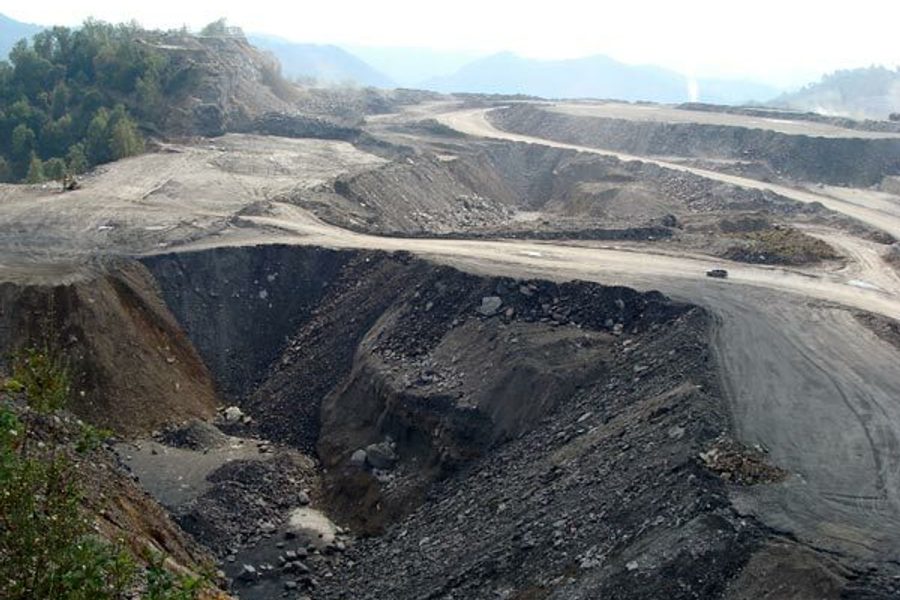Emmylou and the EPA Take on Big Coal
Tough new standards may save Appalachia’s mountaintops.
Peter White

In Nashville’s historic Ryman Auditorium in May, country singer Emmylou Harris and friends performed at the “Music Saves Mountains” concert, raising their voices to protect Appalachia from the ravages of coal mining.
“We call the Ryman the Mother Church of country music, and if that’s true, then the Appalachian Mountains are its sacred ground,” Harris told the audience.
Harris shared the stage with singers Dave Matthews, Alison Krauss and Kathy Mattea, a longtime opponent of the controversial and profitable practice of blowing up mountaintops to get at the coal underneath.
“If the prosperity of some is built on the exploitation of others, everyone loses,” Mattea said. “I’m a hillbilly and proud of it … but I don’t stand against coal or any fellow Appalachian. Yet something must change because the situation as it stands now cannot go on.”
More than 500 mountains in Appalachia have been leveled since mountaintop removal (MTR) mining was first introduced in the 1960s. Since then, about 2,000 square miles of forest in Kentucky, Ohio, West Virginia and Virginia have been destroyed – an area about the size of Delaware.
“You won’t find mountaintop mining in the Sierra Nevada, in the Rockies, in the Adirondacks,” said Allen Hershkowitz of the National Resource Defense Council (NRDC), for which the sold-out concert raised money. “It’s an outlier technology and we want to make it illegal.”
In April, the Environmental Protection Agency (EPA) took a big step in that direction, adopting tough new water quality standards in coal country that signaled the Obama administration’s opposition to MTR. The EPA said the new rules applied to all MTR operations in Appalachia, including the largest in West Virginia history.
In 2007, after a decade of wrangling, the Army Corps of Engineers gave Arch Coal a permit to start blasting 2,300 acres at its Spruce No. 1 Mine in Logan County, W.Va. The EPA’s announcement last month that it intended to block the project brought swift condemnation from Big Coal.
“I am shocked, dismayed and disgusted at [the] EPA’s actions. All of the other agencies involved in the Spruce Mine permit have … opposed EPA’s efforts to initiate this veto action,” said Bill Raney, president of the West Virginia Coal Association.
If the EPA does block the Arch Coal operation, the shock waves will reverberate far beyond Logan County. It will officially put the federal government on the side of groups like the Sierra Club and local activists who have been fighting MTR for decades. It could stop MTR in Appalachia altogether.
The EPA’s new rules were adopted just two months after a January 2010 Science Magazine criticized current regulations practices because mountaintop mining impacts are pervasive and irreversible and mitigation cannot compensate for losses.” The lead author of that report praised the EPA’s new water-quality standards as both appropriate and significant. The EPA plans to test how easily water conducts electricity as a measure of how many trace metals and sulfates have leached into streams from MTR operations.
“If [the] EPA sticks to its guns, I think mountaintop mining will end in Appalachia because there’s no way coal companies can meet the standards,” said Margaret Palmer of the University of Maryland Center for Environmental Science. Palmer’s team analyzed 2,500 water samples collected by West Virginia’s Department of Environmental Protection. In watersheds with no MTR operations, contaminants were low and aquatic life was varied and abundant. In streams where MTR was occurring, enough trace metals and sulfates to poison virtually every living thing downhill and downstream from the mines was found.
“Notwithstanding recent attempts to improve reclamation, the immense scale of mountaintop mining makes it unrealistic to think that true restoration or mitigation is possible with current techniques,” said Keith Eshleman, one of the study’s five authors.
Pollution precision
A Duke University biologist recently took Palmer’s research one step further. Emily Bernhardt used satellite photos and water quality data from Kentucky, Virginia, West Virginia and Tennessee to map mine locations and nearby streams. The nonprofit research group SkyTruth provided Bernhardt with remote sensing data for her analysis. SkyTruth recently made news for challenging official estimates of the Gulf oil spill, based on similar satellite imagery analysis.
“Our main goal was to find out how far downstream impacts extend when you have a mine and … the effects of multiple mines in the same watershed,” Bernhardt said.
Bernhardt was able to construct a detailed picture of mining activity and streams in every watershed in the four-state study area where water quality data was available, and thus determine how much mining activity is occurring in a particular watershed.
“We built a hydrological model that includes elevation levels, so when a drop of water falls on the ground, we know where it will go,” she said.
Nobody has done that kind of analysis in Appalachia before, which makes it possible to measure how far downstream impacts extend from individual mines. In dealing with the human health impacts of mining, the usual approach is to look at disease data by county. That kind of research helps identify cancer clusters and public health risks, but it can’t determine causality. Bernhardt’s work is an important first step toward linking public health hazards to mining.
“Every mine will degrade water downstream to some extent and the more mining you have, the more impact you will have downstream. But now you can ask, ‘What is the likelihood of increased impacts from a new mine going to have against a backdrop of past mining activity?’ “
Bernhardt says both regulators and mine operators will find the answer to such questions useful. For example, regulators could use it to catch polluters and mining companies could use it to decide where they should mine and where they shouldn’t.
‘It’s polarized people’
If the EPA starts blocking MTR permits, coal companies will likely sue. They may find friendlier ground in the courts than in Appalachia or at the EPA. A 2006 Supreme Court case, Rapanos v. United States, redefined the term “waters of the United States” and weakened the legal basis for denying MTR permits under the Clean Water Act (CWA).
In that case, a majority of justices decided that the CWA does not apply to intermittent streams and isolated wetlands unconnected to navigable waterways. MTR dumps tons of debris into high mountain passes where water does not run all the time; the waste clogs the headwaters of streams all over Appalachia. More than 1,000 miles of streams in the region have been buried in mine waste.
Coal companies say their MTR operations are legal and they’ve spent millions restoring and mitigating its effects. The West Virginia Coal Association lists 31 sites its members have created in Kentucky and West Virginia. They include two golf courses, four airports, two sports complexes, a high school, a hunting preserve, a hiking trail, two industrial parks, six prisons, six landfills and one cemetery.
Anti-coal activists say money won’t buy the companies love. But to many working in the region’s coal industry, steady work matters above all else. At a public hearing in Charleston, W.Va., on May 18, EPA officials got an earful from hundreds of angry miners and others whose livelihoods depend on coal mining. Police officers were called in by officials to maintain order because they feared there would be violence.
“It’s polarized people,” said Mattea, a West Virginia native. “Friend against neighbor, brother against sister. I have a friend who wears a bulletproof vest because her life has been threatened so many times. It’s heartbreaking.”
“[People] have to have the job to put food on the table to feed their children, but people are learning that it poisons the water their children are drinking,” said NRDC’s Hershkowitz. The answer, he says, is green jobs for Appalachia. That may be true, but right now, there are a lot more coal mines in Appalachia than windmills.








